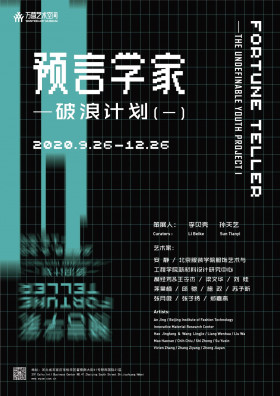Fortune Teller
Isaac Asimov, an American science fiction novelist, put forward a discipline by the name of Psychohistory in his work Foundation. In the novel, Psychohistory became an important means of guiding mankind to step back from darkness into light. Asimov reset humans to molecules. By studying the whole humans in the galaxy, he predicted the fate of the world and the future of mankind. In reality, with the advancement of data models and algorithms, this subject seems to have some rationality: Our daily lives have been heavily dependent on networks, data, statistics and other systems. As barriers between various disciplines are quickly opened, they have made up a huge research matrix, thus contributing to a future that seems to be controlled and calculated, and makes every step of life move ahead akin to model shocks.
Psychohistory is evidently just an ideal discipline existing only in a “sterile vacuum” environment. We have to face a more complex reality: There is an underlying crisis of dictatorship with information when it provides convenience for humans. As data algorithms go deep into various fields, humans are constantly denied of the attributes of freedom of body and mind. The seemingly melting disciplinary barriers still reflect a deeper chain of technological monopolies. While enjoying the express delivery economy, we are becoming objects of consumption…. The rapid advances in technologies have “widened” the gap between cultural traditions, habits of thought, morality and ethics that have different kernels. As an organism, man develops emotions and imaginations around the two parallel and split clues.
In his book The Physics of the Impossible, Michio Kaku describes three degrees of the “impossible”. Except for the third most extreme case, there are only two impossible things: the perpetual motion machine and the prediction power. Although the ability to predict is still only a plot of science fictions, we can intervene in the ways things progress from a microscopic individual perspective. We need to recognize the danger of thinking according to the old practice. The exhibition tries to introduce a mode of discursive thinking in the face of the future, which is multi-dimensional, interventional and sustainable. From a microcosmic perspective, it reschedules the engineering, design and programming to approach a more resilient future.
The exhibition revolves around these observations and hopes to take the opportunity to raise a question: How have the artists and designers reflected, presupposed and introduced fictional methods into the designs of the future under the existing accumulation of reality? They grow up in mutual cooperation and competition. We can still draw on this approach in Foundation: If we take the individuals as molecules of the whole society, each individual’s unique knowledge, domain and information seem to reschedule the prophecy of the individuals after the discipline boundary has “vanished”.
The exhibition’s narrative consists 5 Chapters with keywords: “Wasteland”, “Physical Romance”, “Data Body” , “Algorithmic Poem” and “Perpetual Laboratory”. Each keyword can be seen as a scattering of stars in the constellation which lights up possibilities of the future. This exhibition features works from 12 artists and designers. Hao Jingfang and Wang Lingjie’s work extends the boundary of physics and illustrates the mechanical aesthetics. Qiu Chi and Zheng Jiayan’s installations create a deconstructed doomsday scenario. In addition to the imagination of the future, there are also works that reflect and response to current technologies. Shizheng uses AI algorithms to present fleeting and transmuted news; Mao Haonan attempts to seek and explore human subconscious in virtual time; Liu Wa and Zhang Ziyang’s works discuss the relationship between human sensory abilities, changes in perceptions and machines; Zhang Yuewei, Su Yuxin and Liang Wenhua’s works respond to the penetration of technology into the real world and nature. In the last session of the exhibition, an experimental field about “things” is structed by An Jing. and the New Material Design Research Center of Beijing Fashion Institute of Technology, a team of designers involved in the exhibition, provides design solutions for the future by investigating the properties and innovations of materials. As the team of designers of the exhibition, the New Materials Design and Research Centre of Beijing Institute of Fashion Technology provides various design options leading to the future by studying the attributes and making innovations of the materials.
By Li Beike, Sun Tianyi
 Fr
Fr 中文
中文